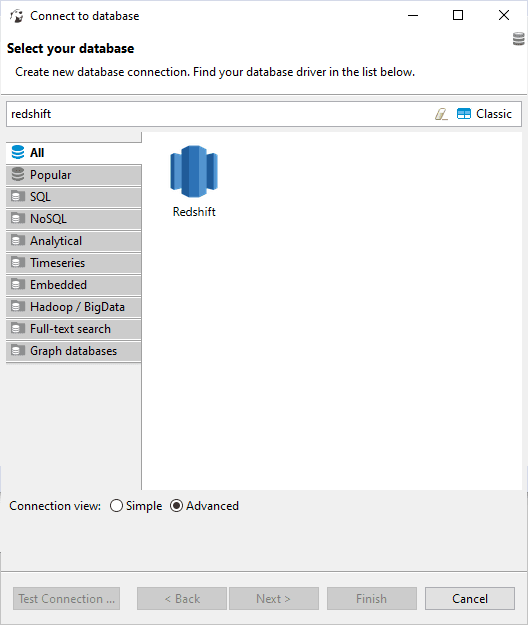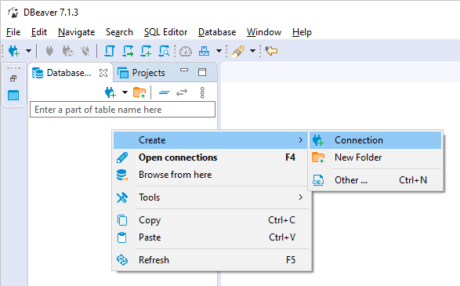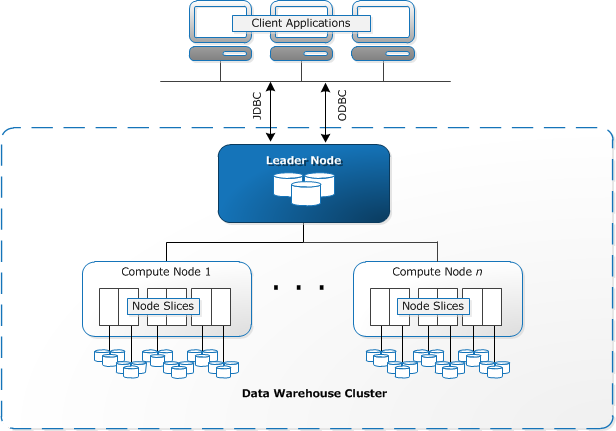

You should have the following permissions for the database: You should whitelist IP addresses mentioned on the Destination connection page. To configure your cluster to require an SSL connection, set the require_SSL parameter to true in the parameter group that is associated with the cluster.įor more information, see AWS documentation. IMPORTANT: by default, cluster databases accept a connection whether it uses SSL or not. Improvado supports SSL certificates provided by ACM by default. Connection is established in verify-full mode. What actually happened cdk deploy always failed on the CfnClusterSecurityGroup even without Redshift cluster creation further command. Improvado uses SSL connection to encrypt data passed to your Redshift cluster. The idea is to create Redshift cluster in a VPC, in a private subnet in own security group having ingress rules to enable connectivity from the bastion host. Improvado supports data load to Redshift clusters located in following regions: Configuring sample data for the cluster.^(?P)\.(?P+)\.(?P+)\.redshift\.amazonaws\.com$įor more information, see AWS documentation. First we have configured the cluster information.Ĭluster identifier: amazon-redshift-clusterī. Given below are the examples mentioned: Example #1Ī. Amazon Redshift cluster is linearly scalable for data growth. Also, it is very useful for analytic workloads. We can fetch a large amount of data at a fast speed. ds1.8xlarge: It will contain the 32 virtual CPU, 244 GB RAM, 2.56 TB storage space and 2-128 node range.īelow are the main parameters which were used at the time of cluster management.dc1.large: It will contain the 2 virtual CPU, 15 GB RAM, 160 GB storage space and 1-32 node range.dc2.xlarge: It will contain the 32 virtual CPU, 244 GB RAM, 2.56 TB storage space and 2-128 node range.dc2.large: It will contain the 2 virtual CPU, 15 GB RAM, 160 GB storage space and 1-32 node range.ds2.xlarge: It will contain the 36 virtual CPU, 244 GB RAM, 16 TB storage space and 2-128 node range.ĭense compute node contains the following node types:.ds2.xlarge: It will contain the 4 virtual CPU, 31 GB RAM, 2 TB storage space and 2-32 node range.ra3.16xlarge: It will contain the 48 virtual CPU, 384 GB RAM, 128 TB storage space and 2-128 node range.ĭense node contains the following node types:.ra3.4xlarge: It will contain the 12 virtual CPU, 96 GB RAM, 128 TB storage space and 2-32 node range. Ensure that the Amazon Redshift cluster creation has been templated using AWS CloudFormation so it can easily be launched in another Availability Zone and data.Our instructions covered getting everything set up with a public IP.
#Cannot create redshift cluster in west how to


At the time of launching, we need to specify the options like node type, the node type which specifies the RAM, CPU and storage capacity of the clusters.

Every redshift cluster contains the leader and computes nodes. We can create a single as well as a multinode cluster in redshift. Select the cluster -> Click on action button -> Click on reboot tab -> click on reboot cluster button. Select the cluster -> Click on edit tab -> modify the cluster -> click on save changes. Select the cluster -> Click on action tab -> Click on delete button -> click on take final snapshot button -> click on delete button. Select the snapshot backup schedule -> Provide the snapshot retention period -> Enable or disable the cross region snapshot -> Enable or disable the cluster relocation.Ĭheck all the selected value once -> click on create cluster button. Provide the time of maintenance window -> Select the maintenance track. Provide database name -> Provide database port number -> provide parameter group -> Enable or disable the encryption of database


 0 kommentar(er)
0 kommentar(er)
